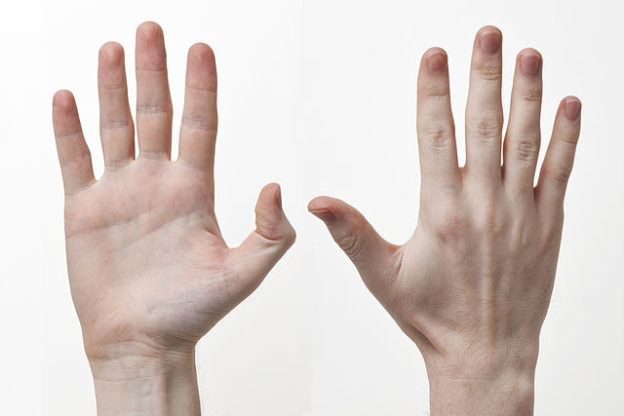Anatomy of the Upper Limb: Muscles of the Hand and Fingers
Table of Contents
Image : “The front and back of a human right hand” by Evan-Amos. License: CC BY-SA 3.0
Many of the muscles that move the hand and fingers are reviewed in the Anatomy of the Upper Limb – Muscles of the Arm article.
The other muscles of the hand are divided into 3 groups: the intrinsics, the thenars, and the hypothenars.
Lumbricals
The lumbricals are four narrow muscle bellies which have no direct bony anchoring. They also stabilize the metacarpophalangeal joints and prevent an ulnar deviation.
Interossei Muscles
The radial artery passes through between the two heads of the dorsal interosseous muscle I. There are three palmar interossei muscles and they are one-headed and lie between the metacarpal bones.
Thenar Muscles
Hypothenar Muscles
Review Questions
The solutions can be found below the references.
1. Which of the following structures does not serve as the origin of the extensor digitorum muscle?
- Lateral epicondyle humeri
- Radial collateral ligament
- Os hamatum
- Annular ligament of the radius
- Antebrachial fascia
2. Which of the following muscles does not belong to the group of thenar muscles?
- Abductor pollicis longus muscle
- Flexor pollicis brevis muscle
- Abductor pollicis brevis muscle
- Adductor pollicis muscle
- Opponens pollicis muscle
3. Which of the following muscles passes through the 3rd tendon compartment?
- Extensor pollicis longus muscle
- Extensor pollicis brevis muscle
- Abductor pollicis longus muscle
- Abductor pollicis brevis muscle
- Adductor pollicis muscle


Comentários
Enviar um comentário